- 200+ Applicant Tracking Systems in 2026 – Big & Small - December 23, 2025
- Using Multiple ATS’s Doesn’t Have to Hurt Your Candidate Experience - December 22, 2025
- What’s the Difference Between a Job Description, Job Posting, and Job Ad - June 5, 2025
The most important question a candidate has is:
“Why should I work for you?”
The operative word is “why”.
That’s why it’s surprising that the 4 most common sections of a job description focus almost entirely on answering the question “What?” Examples:
- Overview/Summary of Job — Most JDs use this to say “what” the position is
- Responsibilities — This typically focuses on “what” the candidate will be doing
- Requirements — This section is all about what skills and experience the candidate should have
- About Us — This describes “what” your company does
It’s so bad that I am now seeing a commonly used new job description layout with only 3 “Whats”
- “What we need”
- “What you’ll be doing”
- “What will make you successful”
What…what…what!
It’s enough to drive a marketer (which all of us recruiting folks need to be) mad!
The bigger question for you to answer in your job ads is “why?”.
As usual, it starts with your job description. Here are are some thoughts:
7 Things to Add to Your Job Ads to Answer the Question “Why?”
1) Mission
Your mission helps answer the question “why?”. Notice how Pointcare’s job advertisement (below) opens up with mission-oriented language.
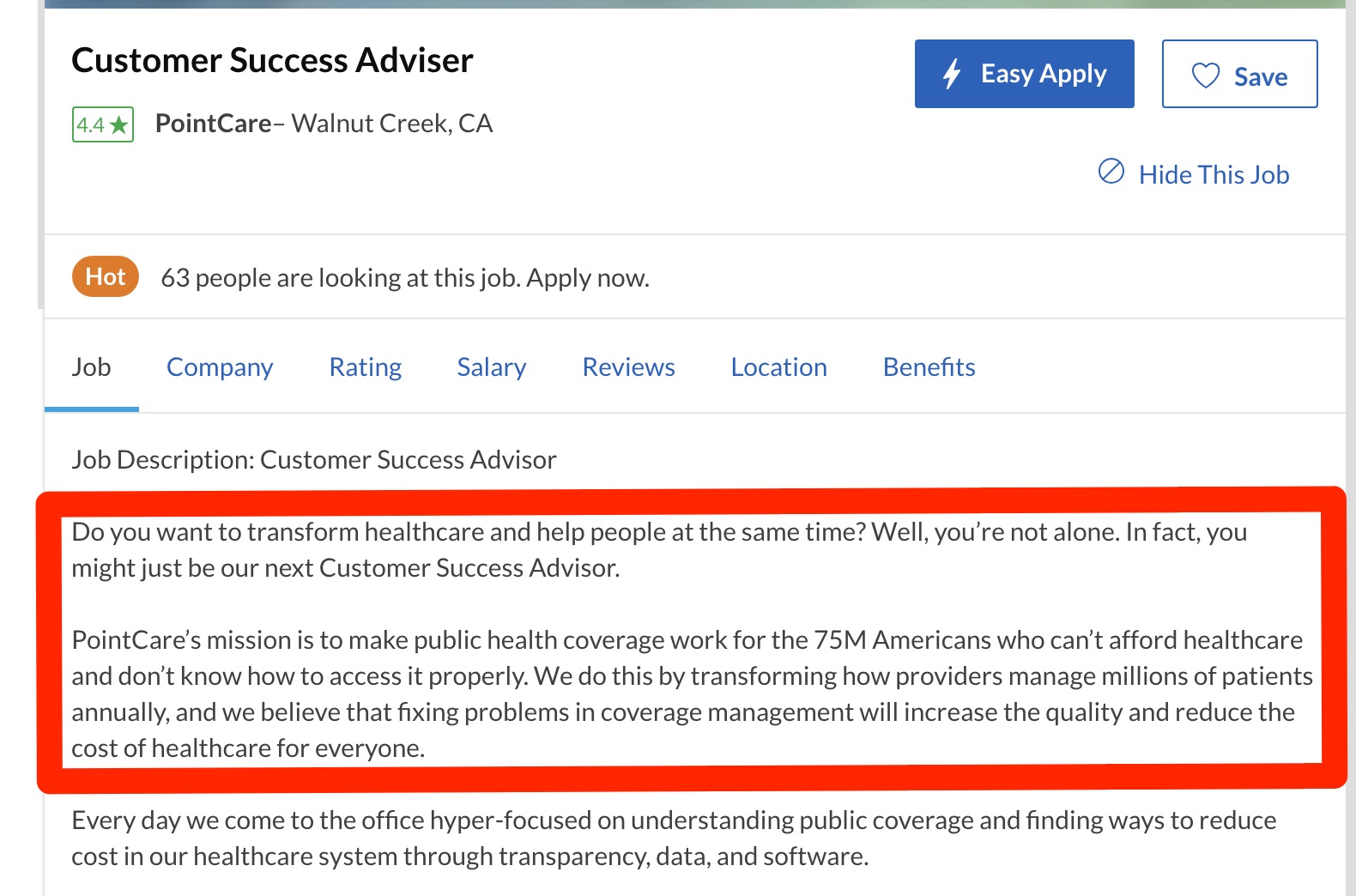
2) Have a Benefits/Perks Section
Sounds obvious, right? But only half of you are including a Benefits section according to an anecdotal look at job ads on Indeed, Glassdoor and LinkedIn.
Having a list of benefits in your job ad gives multiple examples of why a candidate should work for you (e.g. insurance coverage means peace of mind for the candidate’s family; a fitness subsidy means better health; team bonding = new friends!).

3) List Compensation/Salary
Your candidates want to know what they’ll make. You can include it directly within the job ad (see Terminix below)…
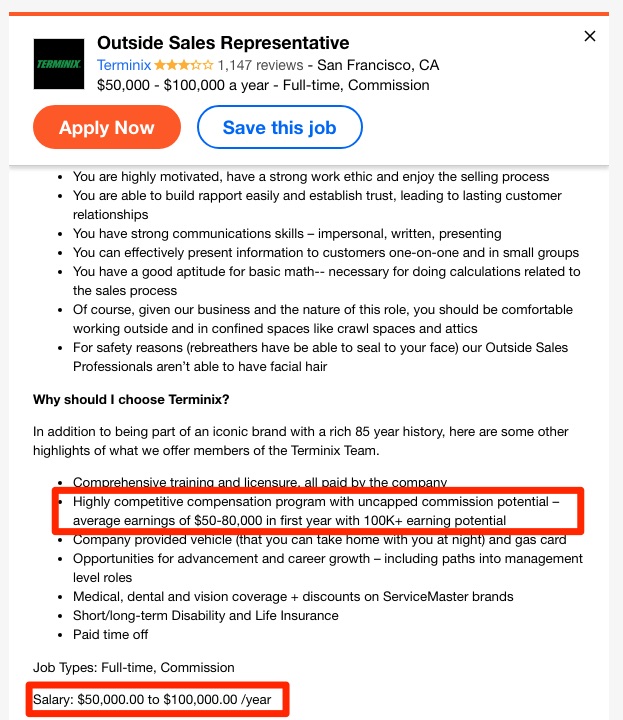
…or you could link off to a 3rd party source’s estimate of salaries at your company like this Ongig client below did in their job advertisement.
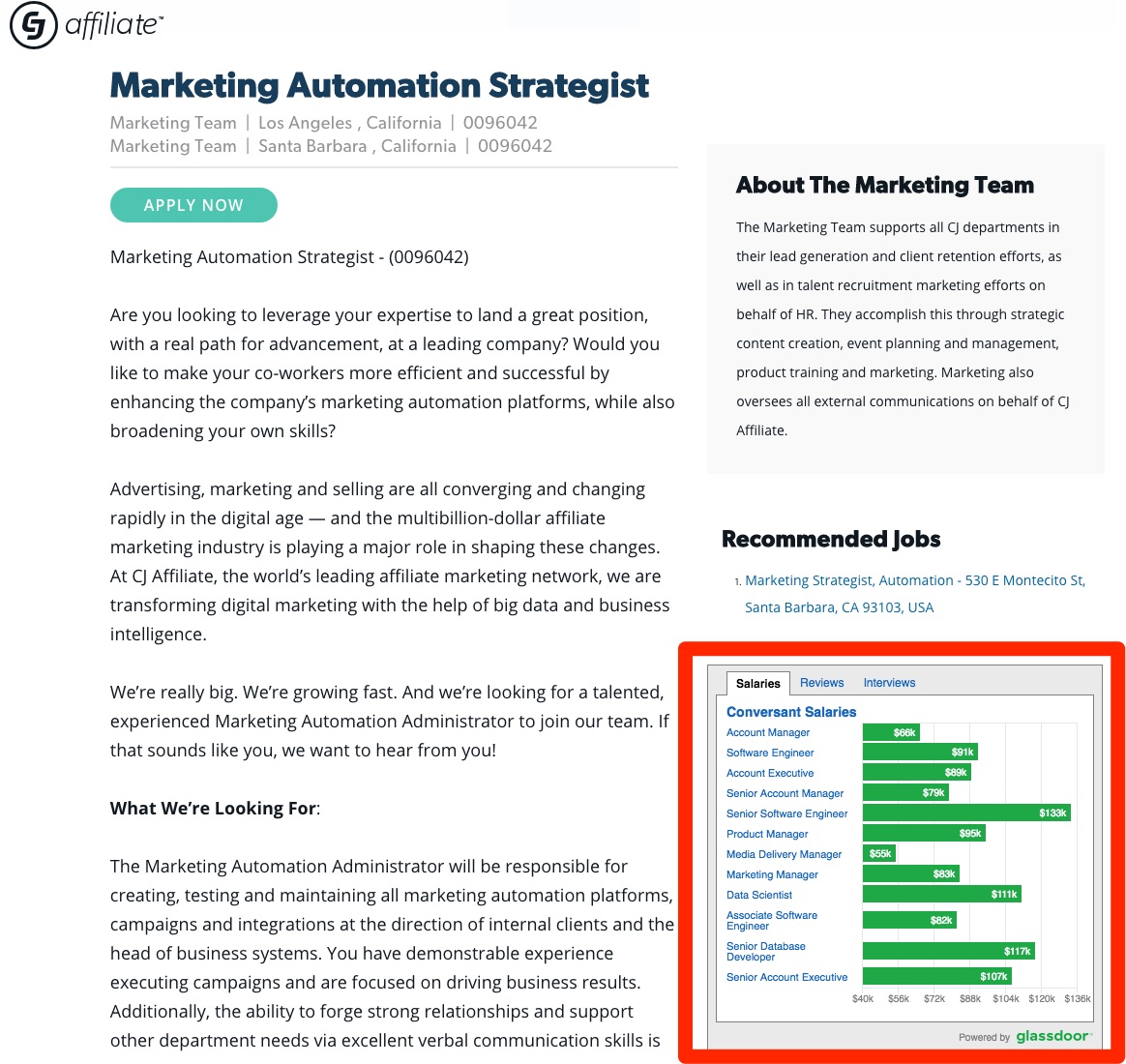
4) Say Who the Candidate Gets to Work With or Report To
Candidates value learning and mentorship. A good job ad describes who the person will report to or work closely with.
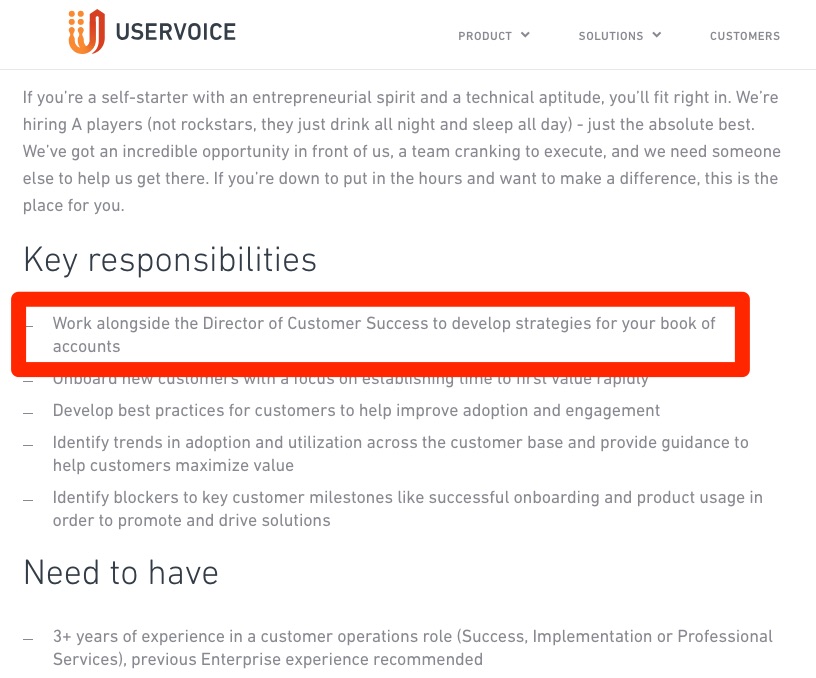
5) Let Your Diversity Statement Show Your Values and Personality
Diversity is not only the right thing for all of us to strive for…it also makes good marketing sense.
Check out T-Mobile’s diversity statement below.

It’s both eye-catching and the text they use is effective at saying to the candidate: “just be yourself”. Isn’t’ that all any of us want?
Check out these 10 Examples of Awesome Diversity Statements I wrote about.
6) Have a “Challenge” Section
Why do the best candidates join a company? For the challenge! So why not give them one right in the job ad…how about a whole section on it!
That’s what Lever does below:
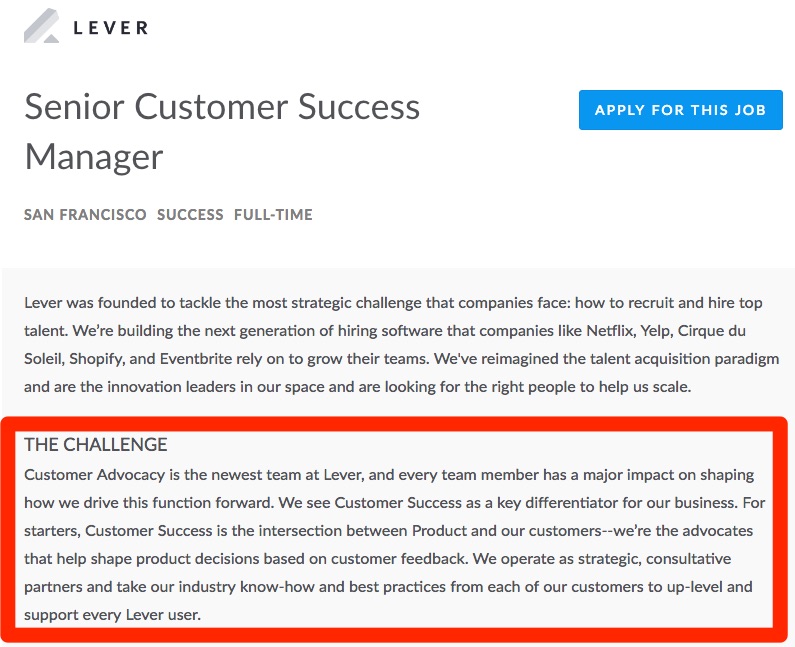
7) Show Exactly Where They’ll Work
Many candidates will work for you because it’s a shorter commute. Or perhaps your location is next to their favorite cafe.
Even if you don’t have a great place, you should still be clear about it. Include a map or the full address in your job ad (like Continental Tires below).
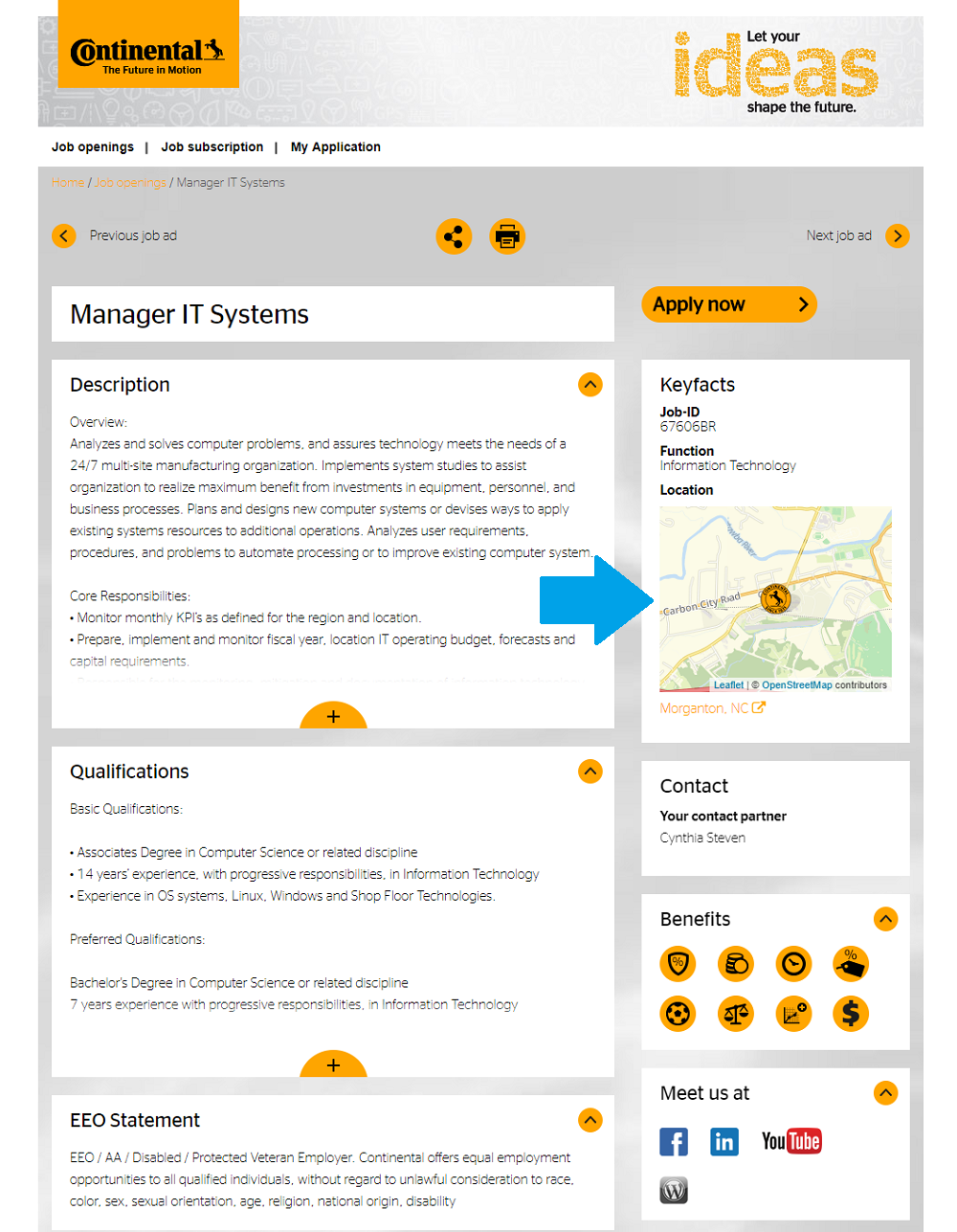
…and if you have remote/work from home jobs, even better. Emphasize it in your job postings like Kaplan does in their job advertisement below:
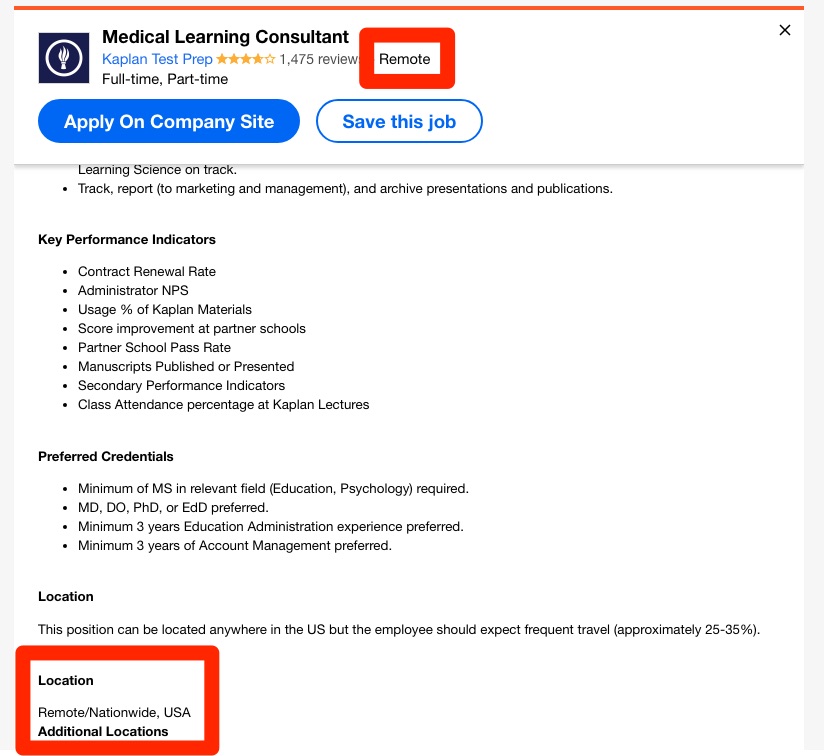
Final Tips on Answering the Question “Why?”
If you want to stimulate your dome piece more on this subject, you could do worse than this.
Check out the Maslow Hierarchy of Candidate Needs (for Job Ads) pyramid my teammate Nick created for me:
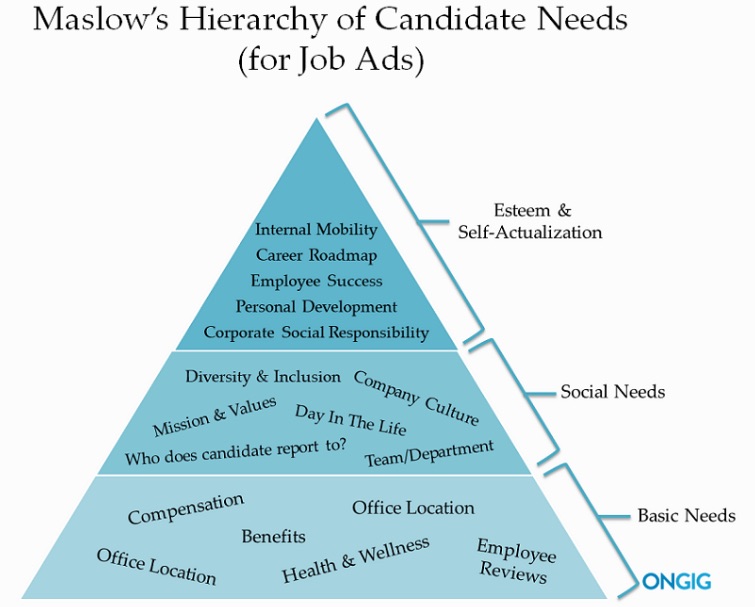
All of those candidate needs in the pyramid above relate to “why” the candidate should work for you. We liked “Office Location” so much we included it in the pyramid twice. Hah!
Why I wrote this?
Ongig’s mission is to help you increase quality applications through the best job descriptions. The best job ads answer the question “why?”.
